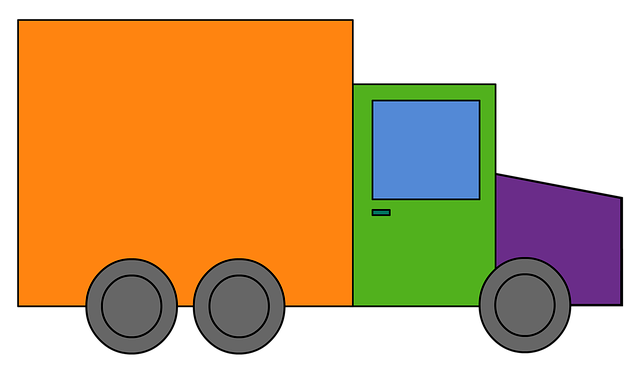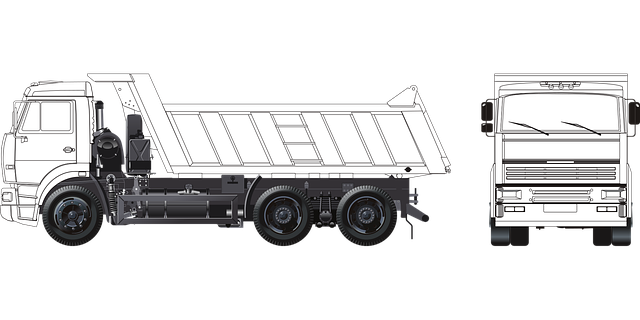Registering a car in California is a straightforward process, but understanding the requirements is crucial. This guide walks you through the steps, from gathering essential documents to completing the online application. First, understand the state’s car registration rules and ensure you have all necessary paperwork, including proof of ownership and insurance. Then, undergo mandatory DMV VIN verification for accurate data validation. Afterward, submit your application, pay the fees, and acquire your new license plates.
- Understand California Car Registration Requirements
- Gather Necessary Documents for Vehicle Registration
- Visit Your Local DMV for Vin Verification
- Complete Online Car Registration Application
- Pay Car Registration Fees and Obtain License Plate
Understand California Car Registration Requirements

Before registering your car in California, it’s essential to understand the state’s specific requirements. The California Department of Motor Vehicles (DMV) mandates several crucial steps for car registration, including accurate and up-to-date information on your vehicle. One critical aspect is the DMV VIN verification, where the unique Vehicle Identification Number (VIN) of your car is cross-checked against official records to ensure authenticity and prevent theft. This process plays a vital role in California’s efforts to maintain a secure and transparent automotive registry.
Additionally, you may opt for mobile VIN verification services, offered by some specialized companies, which provide an alternative to the traditional DMV visit. These mobile vin inspection or mobile vin verifier options allow for convenient and often faster registration by performing the VIN check at your location using advanced technology. However, it’s crucial to ensure these services are legitimate and trusted to avoid any potential issues with the state authorities.
Gather Necessary Documents for Vehicle Registration

Before you can register your car in California, you’ll need to gather several essential documents. These include the vehicle’s registration certificate from the previous state, a completed California Vehicle Registration Application form (DMV Form VR-57), and proof of insurance. It’s also crucial to have your vehicle’s VIN (Vehicle Identification Number) verified by the DMV through a process known as VIN verification. This can be done conveniently with a mobile vin inspection or using a trusted mobile vin verifier to ensure all information is accurate. Additionally, you’ll need to present a valid driver’s license and proof of residency in California, such as a utility bill or lease agreement.
Visit Your Local DMV for Vin Verification

Before you can register your car in California, you’ll need to undergo a crucial step known as DMV VIN verification. This process involves visiting your local Department of Motor Vehicles (DMV) office and ensuring that the Vehicle Identification Number (VIN) on your car matches the records they have on file. During this verification, a representative will check for any discrepancies between the vehicle’s description, make, model, and year, as listed on the VIN.
If you’re looking to streamline this process, consider utilizing services like mobile VIN verifiers. These services send a professional to your location to perform an inspection and provide immediate results, which can be especially convenient if you have a busy schedule or face challenges transporting your vehicle to the DMV. Alternatively, some companies offer remote verification using digital tools, ensuring compliance without the need for physical visits.
Complete Online Car Registration Application

To begin the car registration process in California, start by completing the Online Car Registration Application. This form is available on the official California Department of Motor Vehicles (DMV) website and allows you to input your vehicle’s details, including its make, model, year, and unique Vehicle Identification Number (VIN). The VIN is a crucial piece of information for any car registration as it helps in verifying ownership and identifying specific models.
A mobile vin verifier or mobile vin inspection tool can be handy during this step, ensuring the accuracy of your VIN entry. These services allow you to quickly and easily confirm your vehicle’s details, saving time and reducing potential errors on the form. Once you’ve submitted the application, you’ll receive a confirmation and instructions for the next steps in the registration process.
Pay Car Registration Fees and Obtain License Plate

After completing your car’s registration application at the California DMV, the next step is to pay the required fees. These fees vary based on factors like vehicle type and age, but typically include a registration fee and a vehicle identification number (VIN) verification charge. Once these are settled, you can proceed to obtain your license plates.
To streamline this process, many Californians opt for a mobile VIN verifier or conduct a vin inspection online before visiting the DMV. This initial step helps ensure that all documents are in order, making the physical visit more efficient. Remember, having accurate and up-to-date information is key to a smooth car registration experience, so always verify your details using reliable methods like these mobile vin verification services.
Registering a car in California involves understanding state requirements, gathering essential documents, and completing a series of steps. By first verifying your Vehicle Identification Number (VIN) with the DMV, you lay the foundation for a smooth registration process. Subsequently, filling out the online application, paying fees, and obtaining license plates finalizes the process, ensuring your vehicle is legally registered and ready to hit the California roads. Remember to keep all relevant documents handy for future reference and potential inspections.
